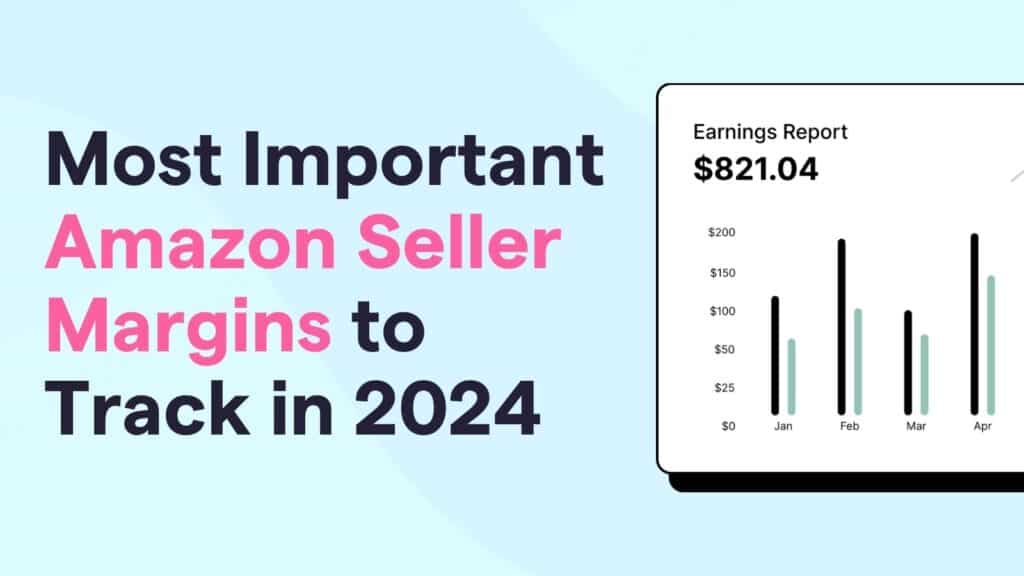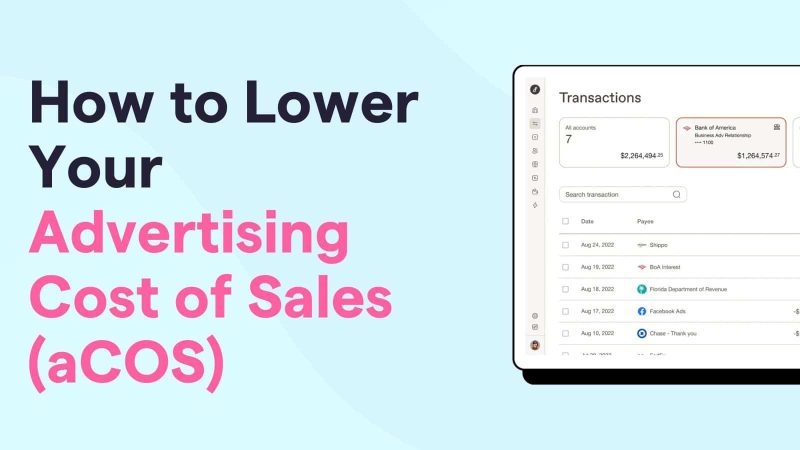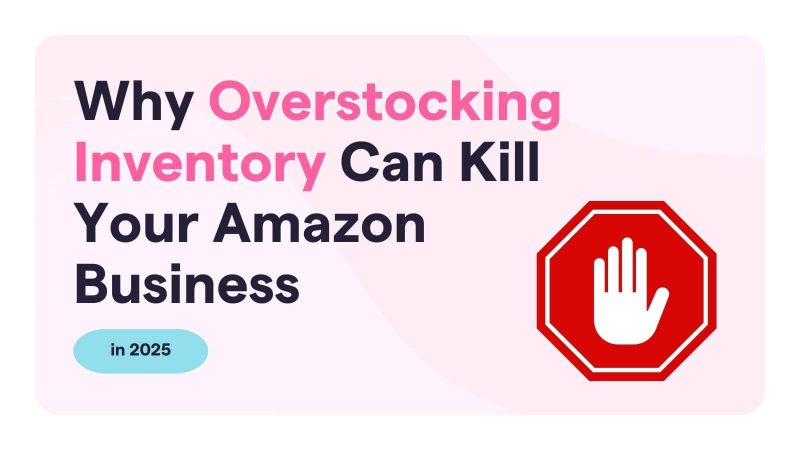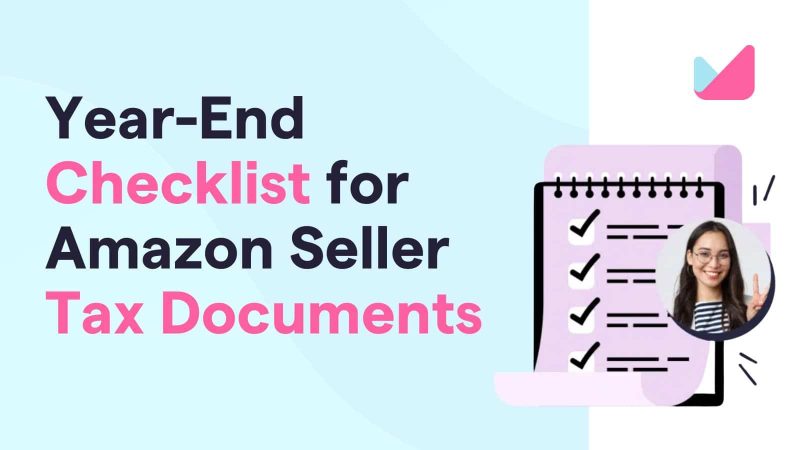At MuseMinded, we’re all about margins.
Okay, maybe we’re a bit obsessed, but it’s for a good reason.
Keeping an eye on your margins is a great way to see if your business is on the right track.
In fact, we even put together our annual MuseMinded Benchmark Report to show you what target margins you should aim for.
For example, according to our latest report, Amazon seller margins usually have a gross margin of around 36% and a net profit margin of about 3%. For the best results, though, you should aim for a gross margin of 40% or more and a net profit margin between 5% and 15%.
But why are these margins so crucial? And how can you use them to boost your profitability?
In this article, we’ll break down the key margins you need to track, how to calculate them, and tips on improving them.
Ready to get started? Let’s dive in!
Gross Profit Margin
Gross profit margin is the percentage of profit you earn after taking away the cost of producing or acquiring your product (cost of goods sold/COGS) from the amount you sold it for.
For instance, you acquired gardening tool sets from China for $40 each and you decide to sell them for $50 each. If you sell 50 sets, you end up with a gross profit amounting to $500.
Then, calculate the gross profit margin by dividing the gross profit of $500 by the total sales of $2,500. This gives us 20%.
Gross profit margin shows how efficient your costing and pricing strategies are.
How to Boost Your Gross Profit Margin:
Negotiate better deals with suppliers: Ensuring you’re getting a good deal requires you to be familiar with current market prices so you can haggle wisely or leverage bulk orders. Often, suppliers also give discounts or loyalty incentives to buyers who have good standing.
Reduce production costs: Without compromising quality, look for cheaper materials to use or research on how you can hasten production. Do not dismiss the idea of shedding money that invest on technologies that can help streamline your operations. With proper research and guidance, these investments may eventually pay off.
Strategize pricing: If you are offering a unique or high-quality product, it’s often reasonable to increase your prices slightly. If your product competes stiffly with others, focus on product differentiation by improving product features, packaging, or customer service. Also analyze your competitors’ pricing level and adjust yours to stay competitive while still maintaining a healthy margin.
Contribution Margin
Contribution margin is an essential metric that helps you understand how much of your revenue contributes to covering fixed costs after accounting for variable costs like COGS and advertising. Unlike gross profit margin, which focuses on product costs, contribution margin gives you a clearer picture of profitability by factoring in variable expenses directly tied to sales.
For example, suppose you sell a product for $100 with a COGS of $40 and spend $20 on advertising to sell each unit. Your contribution margin per unit would be $40 ($100 – $40 – $20), giving you a contribution margin percentage of 40%.
How to Boost Your Contribution Margin:
Optimize Advertising Costs: Regularly review your Advertising Cost of Sale (ACoS) and adjust your ad spend to ensure you’re not overspending to acquire customers. Lowering ACoS will directly improve your contribution margin.
Increase Product Pricing: Where possible, consider raising your prices slightly, especially if your product has a unique value proposition. Even a small price increase can significantly boost your contribution margin.
Focus on High-Margin Products: Prioritize selling products with higher contribution margins. Discontinue or limit the marketing of products that don’t contribute enough to cover your fixed costs.
Net Profit Margin
Net profit margin is the percentage of your revenue that remains as profit after all expenses are deducted, including operating costs, taxes, and interest. This is calculated by dividing net profit by total sales.
Following our previous example, if you earn a total of $2,500 for all 50 sets of gardening tools, incur $2,000 for COGS and an additional $200 for other relevant expenses such as advertising, shipping, and utilities, you end up with a net profit of $300.
This gives you a net profit margin of 12% after dividing $300 by $2500.
Net profit margin takes a more comprehensive view by factoring in all business expenses, not just COGS. It reveals your business’s true profitability and efficiency.
How to Boost Your Net Profit Margin:
Cut operational costs: Look for ways to save on daily expenses by automating parts of your operation to save on labor costs or switching to a cheaper utility provider.
Streamline logistics: While a huge chunk of Amazon sellers use FBA and only over a third use FBM, carefully consider which works best for you in terms of cost. Usually, if you’re just starting out, FBM might be a better option since inventory turnover may not yet be that fast. FBA is the way to go when inventory turnover is quicker or if you don’t have logistics in place.
Optimize your tax strategy: Although it may require some initial investment, consulting the professionals (*coughs*) actually provides significant long-term savings. With their smarts, they can help you take advantage of any deductions or credits you might not know you’re eligible for.
Keeping Healthy Margins
Whether you’re making the average $1,000 per month or super sell at $100,000, total sales is only one side of the business equation.
To stay on top of your game, especially in the bustling Amazon marketplace, we can’t stress it enough just how important it is to keep track of your margins and to make sure they’re always healthy.
But with a bunch of things to look after, we know how all these can be overwhelming even for the most seasoned sellers.
That’s why we’re here to help you navigate these complexities with zero hassle and stress. Our team is equipped to give you a clear picture of your margins and develop data-driven strategies to optimize your operations.
Book a call with our team today so we can help you streamline your processes, keep your margins healthy, and ensure the long-term success of your Amazon business!




